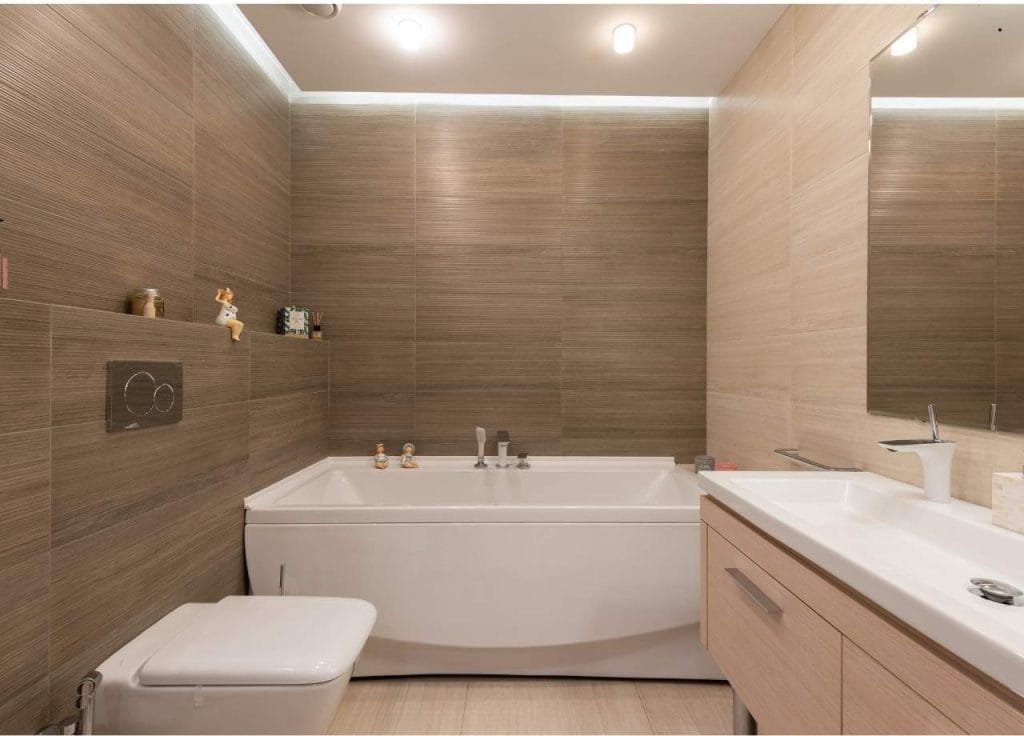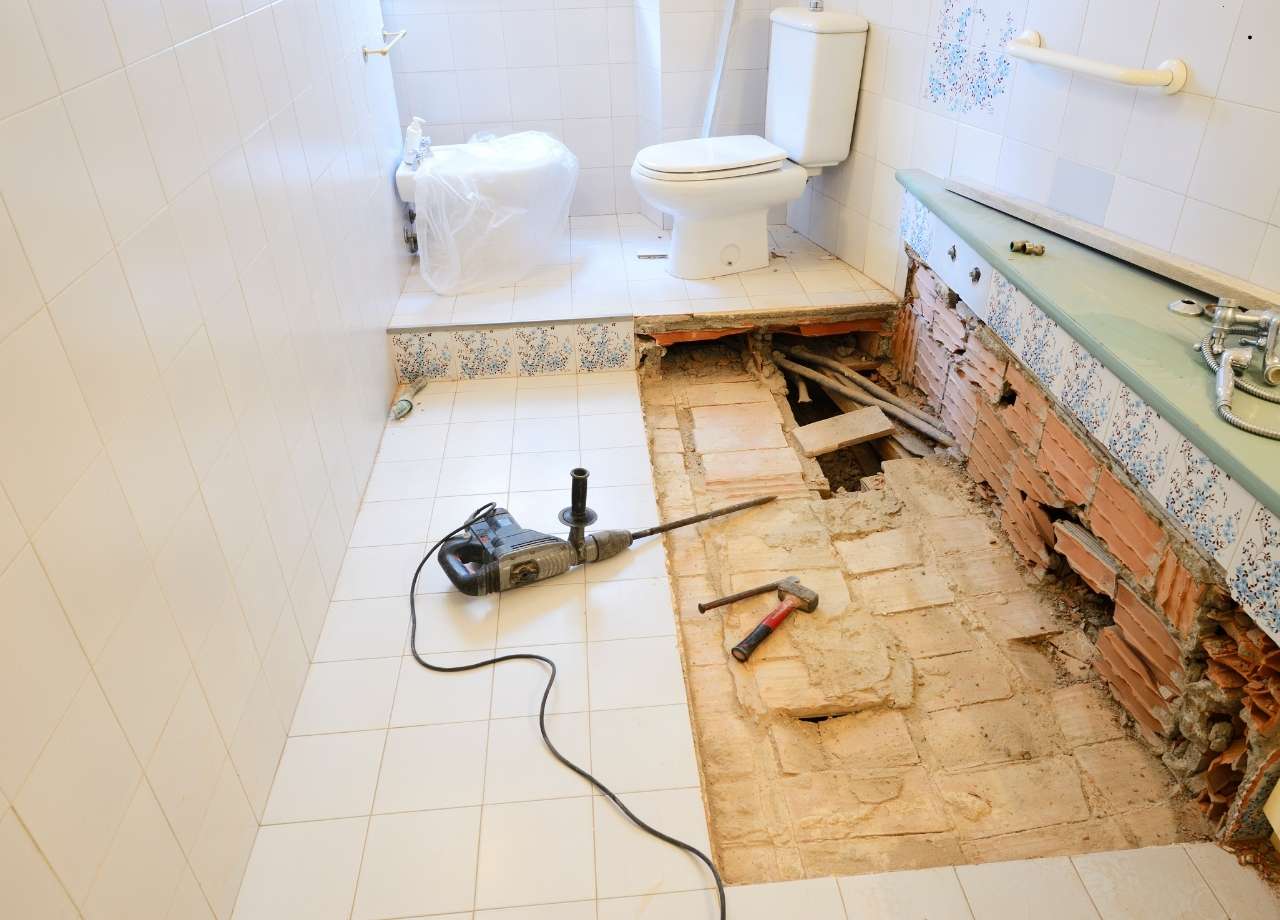Bathroom remodeling projects often begin with a single decision that sets the tone for everything else: what to do about the cabinets. In many Jacksonville homes, bathroom cabinets are outdated, water-damaged, or simply don’t fit the current design preferences. Whether you’re upgrading a historic home near Avondale or refreshing a beachfront property in Ponte Vedra, cabinet decisions matter not only for appearance but also for cost, function, and timeline. One common question homeowners face is whether to reface or replace their bathroom cabinets.
At First Coast Contracting, we’ve helped homeowners across Jacksonville and St. Augustine evaluate their options and make the right call for their space, goals, and budget. Here’s what you need to know to make an informed decision about cabinet refacing versus replacement.
Table of Contents
Understanding Cabinet Refacing
Refacing involves removing and replacing the cabinet doors and drawer fronts while keeping the existing cabinet boxes in place. Veneer or laminate is applied to the exposed frames to match the new doors, and hardware like hinges and pulls can be swapped out as part of the upgrade.
This process is faster and more affordable than a full replacement. Because the core structure stays intact, there’s no need to demolish or reconfigure your plumbing or flooring. For bathrooms with good cabinet layout and solid structural integrity, refacing makes sense.
Many homeowners choose refacing when the current cabinetry still functions well but looks dated. Whether the finish is scratched, the color feels outdated, or you’re switching to a more modern style, refacing delivers a strong visual upgrade with minimal disruption.
When Refacing Is a Smart Choice
Refacing is ideal when the following conditions apply:
- The cabinet boxes are in good condition—no rot, swelling, or warping.
- The layout of the cabinetry works well with the room.
- You want to update the look quickly and keep costs manageable.
- The bathroom remodel doesn’t involve major structural or plumbing changes.

This option is especially effective in smaller bathrooms or powder rooms where cabinetry isn’t the focal point but still needs to look clean and updated. Jacksonville homes built in the ’90s and early 2000s often have cabinets that qualify for refacing—they’re structurally sound but stylistically outdated.
Limitations of Refacing
While refacing can save time and money, it’s not always the right choice. If your cabinet boxes are damaged by water, mold, or age, refacing won’t fix the underlying issues. Over time, Florida humidity and steam from daily showers can take a toll on lower-quality materials, even if the damage isn’t immediately visible.
Also, refacing doesn’t allow you to change the cabinet layout or increase storage. If your current setup lacks functionality—or if you’re redesigning the whole space—replacing might be a better fit. Likewise, homeowners wanting premium finishes like inset doors or full-extension drawers may find those features harder to integrate with refacing.
Replacing Cabinets: A Fresh Start
Cabinet replacement means removing the existing cabinetry entirely and installing new units. This gives you the freedom to change the layout, improve storage, and upgrade to higher-end materials and finishes.
In older Jacksonville homes, especially those that have seen previous DIY updates or water damage, replacement often becomes necessary. Structural issues in cabinet bases or signs of moisture damage under the sink usually mean the boxes can’t be salvaged. Replacement also makes sense when you’re expanding the bathroom or making significant changes to the plumbing and electrical layout.
Today’s cabinet options range from budget-friendly stock pieces to custom builds with soft-close doors, integrated lighting, and smart storage features. Custom cabinets are popular in high-end renovations in areas like San Marco or Queen’s Harbour, where maximizing space and achieving a cohesive design are top priorities.
Benefits of Replacing Cabinets
Replacement offers some clear advantages:
- Full control over layout and configuration.
- Opportunity to correct structural damage or subpar previous work.
- Ability to choose new materials, colors, and styles without limitation.
- Better long-term durability with updated construction methods.
In master bathrooms where the cabinetry is a major visual and functional feature, replacement can significantly increase both daily satisfaction and property value. It’s also the only viable option if you want to add double vanities, extra storage towers, or built-in hampers.
Things to Consider Before Choosing
Before you commit to refacing or replacing, take stock of your bathroom as a whole. Are you planning a simple cosmetic update or a full renovation? Will you be changing the footprint of the room? Is there visible water damage near the sink or toilet base?
Also consider your long-term plans. If you’re staying in the home for five years or more, investing in replacement might make more sense, especially if your current layout doesn’t work well. On the other hand, if you’re prepping for resale or working within a tighter budget, refacing can deliver high visual impact with less hassle.
Another factor to weigh is timeline. Refacing can be completed in a few days, while full cabinet replacement may stretch out over a week or more, especially if it’s part of a larger remodel involving plumbing or tile work. For families with only one full bathroom, the faster turnaround of refacing may be a major advantage.
Cost Differences Between Refacing and Replacing
On average, refacing bathroom cabinets costs 30% to 50% less than full replacement. This gap can grow depending on materials and labor. A refacing project using high-end veneers and hardware might approach the cost of budget cabinet replacement, but generally, refacing is more budget-friendly.

Cabinet replacement costs are influenced by the size of the bathroom, cabinet material (MDF, plywood, hardwood), door style, and whether you opt for stock, semi-custom, or fully custom options. Additional costs may include plumbing adjustments, flooring patches, and wall repairs—none of which are typically needed with refacing.
In Jacksonville, where older homes often come with quirks like uneven floors or unconventional plumbing layouts, replacing cabinets sometimes uncovers hidden problems that need to be addressed. These costs can add up, but they also improve the long-term safety and usability of the bathroom.
Making the Right Decision for Your Jacksonville Home
Choosing between refacing and replacing comes down to the condition of your current cabinets, your remodeling goals, and your budget. If your boxes are solid, your layout works, and you just want a cleaner look, refacing is a smart, efficient solution. But if you’re running into signs of wear, struggling with a poorly designed space, or planning to stay in the home for the long haul, full replacement offers more value.
Bathroom remodeling doesn’t have to be overwhelming. With the right approach—and a contractor who understands the demands of Northeast Florida homes—you can make confident decisions that lead to beautiful, lasting results.
Whether you’re thinking about a quick refresh or a total renovation, understanding the difference between refacing and replacing is key. Take the time to inspect your current cabinetry, consider your bathroom goals, and don’t hesitate to get a professional opinion. A well-informed decision now will help you avoid costly regrets later, and the right cabinets can completely transform how your bathroom looks and functions for years to come.


